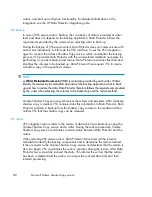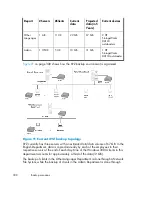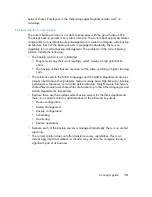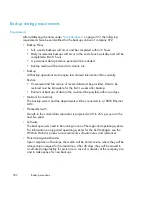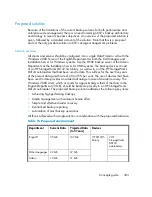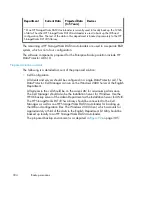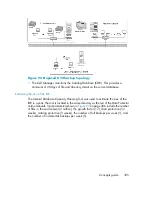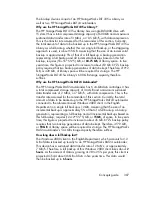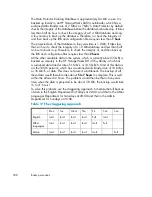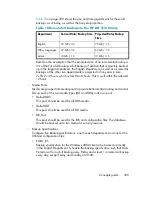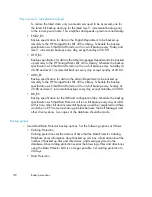
•
Backups can be performed at any time without locking out users.
•
There is little or no impact on the performance of the application system during
the backup process.
Backup and restore
VSS backup is implemented as an additional Windows filesystem backup on Windows
Server 2003. The level of data integrity is slightly improved in comparison to a
traditional backup of active volume. For detailed information on Windows filesystem
backup and restore, see the online Help.
During a VSS filesystem backup, applications cannot effectively contribute to data
consistency because they are not aware of the VSS mechanism. However, Data
Protector and a provider can still cooperate in creating volume shadow copies. VSS
filesystem backup offers the option of backing up data as it appears at a certain
point-in-time, regardless of system I/O activity during the backup.
When Data Protector requests a backup of the volumes specified in the backup
specification, the VSS mechanism commits all pending I/O operations, holds incoming
writing requests, and prepares a shadow copy volume.
When the shadow copy is created, Data Protector starts its normal backup procedure,
except that the source volume is replaced by the newly created shadow copy. If
shadow copy creation fails, Data Protector will proceed with a normal filesystem
backup if such behavior was specified in the backup specification.
A computer is backed up while files are open and services are running. Files are not
skipped during such a backup. VSS allows services and applications to continue
running uninterrupted on the actual volumes while a shadow copy is being made.
After the backup is completed, the shadow copy is deleted.
The restore of data backed up using the VSS filesystem backup does not differ from
the standard restore procedure.
Microsoft Volume Shadow Copy service
296
Summary of Contents for B6960-96035
Page 17: ...Overview of backup and automated media copy sessions 340 105 Concepts guide 17 ...
Page 20: ...20 ...
Page 22: ...Publication history 22 ...
Page 132: ...Planning your backup strategy 132 ...
Page 182: ...Media management and devices 182 ...
Page 186: ...Users and user groups 186 ...
Page 204: ...The Data Protector internal database 204 ...
Page 218: ...Figure 62 Direct SIP integration example Service management 218 ...
Page 242: ...Integration with database applications 242 ...
Page 264: ...Synthetic backup 264 ...
Page 274: ...Split mirror concepts 274 ...
Page 288: ...Snapshot concepts 288 ...
Page 344: ...Further information 344 ...
Page 402: ...Glossary 402 ...













